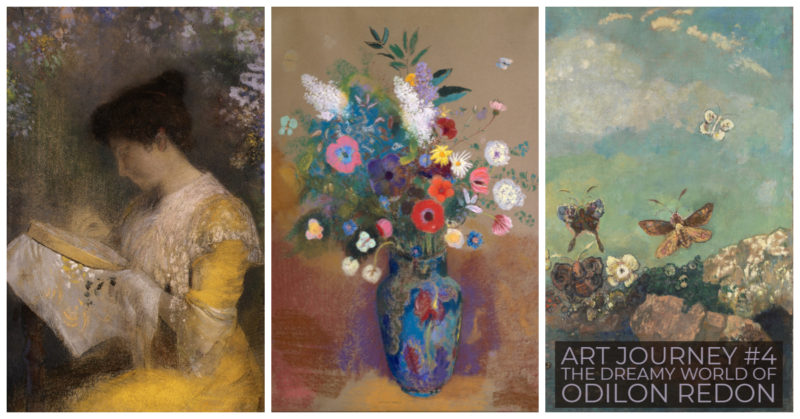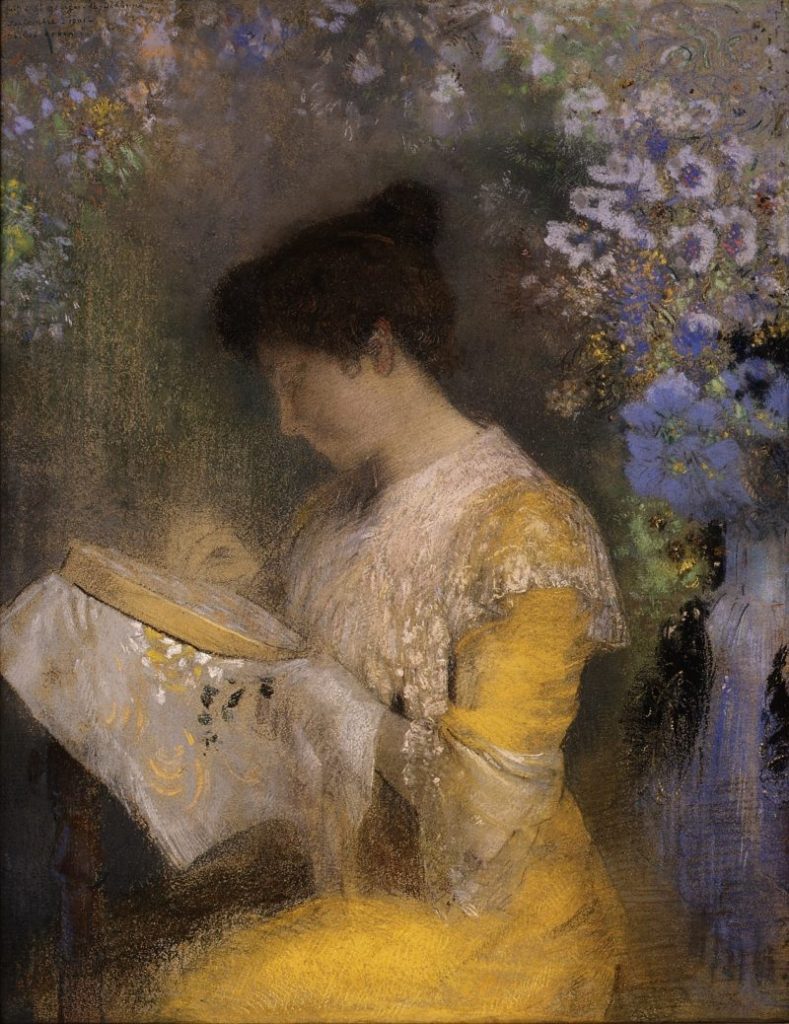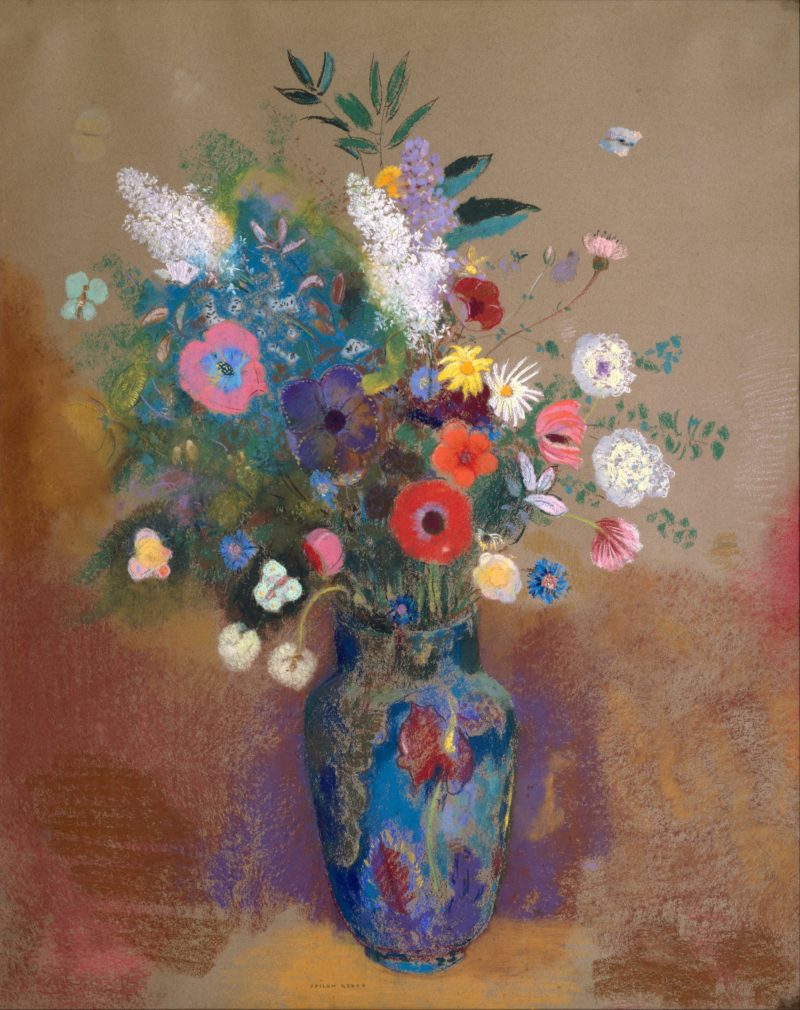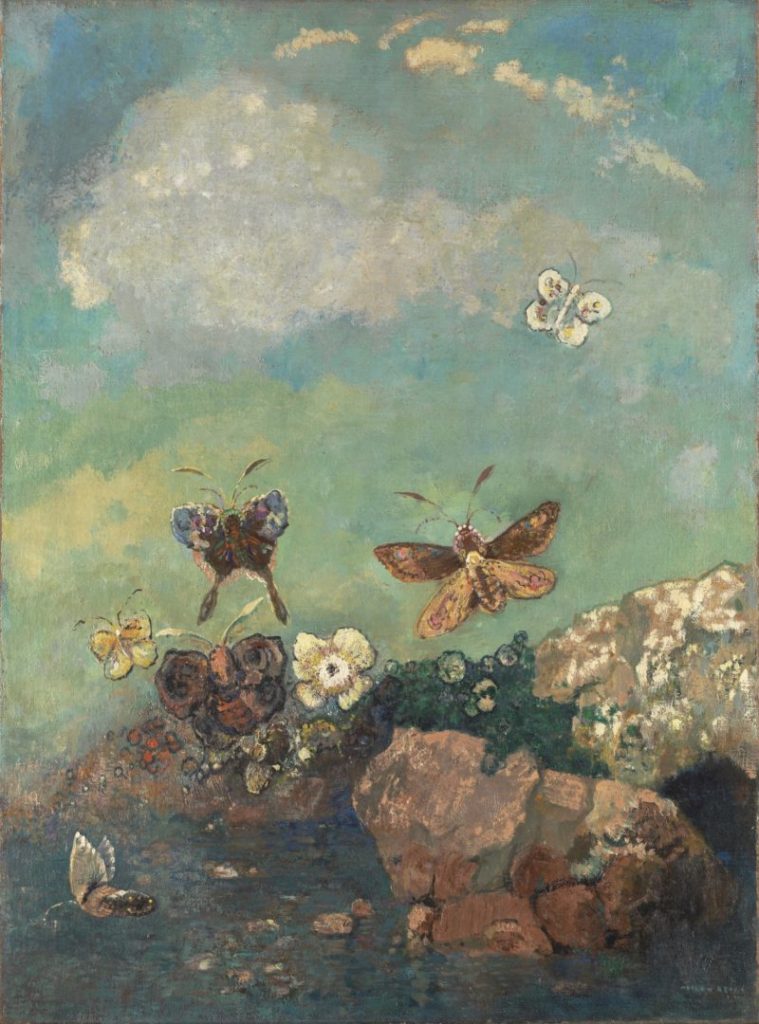
Aren’t these paintings by Odilon Redon just dreamy? They have a gauzy, other-worldly look to them. I feel like time stands still in these images and that we might be looking into the dreams of the creator.
Do remember your dreams? Do you dream in color?
Dreams are a universal human experience. They are a deep state of consciousness that is marked by sensory, cognitive and emotional occurrences while sleeping. Dreams are a vivid combination of thoughts, images and emotions. These stories that our minds create while we sleep can be entertaining, funny, romantic, disturbing, insightful and bizarre.
Interesting facts about dreams
- Everybody dreams.
- We dream about 3 to 6 times a night, seemingly synced to our REM sleep.
- Each dream lasts between 5 to 20 minutes
- We forget 90% of our dreams before we get out of bed.
- We only dream of what we know and what we see in life.
- Dreaming can help you learn and develop long-term memories.
- Dreams prevent psychosis.
- Blind people dream more with other sensory components than sighted people.
- Not everyone dreams in color; some dream in black and white
- Babies do not dream about themselves until around the age of 3.
Of course, dreams are a hard thing to study, but evolving research and new technologies could help our understanding. And interpretations of the imagery can vary wildly. Typically, what goes through our minds just before we fall asleep can affect the content of our dreams, including situations, relationships, and current events. This is called dream-lag, when things in our recent lives are encoded into our long-term memory and are reflected in our dreams.
My daughter is about to go off to college this fall and hopes to study neurobiology along with her dance degree. I am intrigued by the difference in the way the neuroscientists examine dreams as compared to psychoanalysts. I found a study that shows that the left hemisphere of our brain provides the seed, the dream origin, while the right hemisphere contributes to the vividness, or makes it grow. Another study of adolescents found that those who were left-handed experienced a higher frequency of lucid dreams (when you are aware you are dreaming and have some control over it). Fascinating! (I will have to ask my left-handed husband if this is true!)
Dream Dictionary
There are countless online websites and books that give you ways to interpret your dreams. I poked around on My Dream Visions where you can put in a brief description of your dream and it would give you some possible interpretations. Go ahead. Give it a try! If I were interpreting these three paintings as dreams, here is what I found.

Interpretation of Madame Arthur Fontaine, 1901:
Mother: Your real-life mother, an authority or caretaker figure (such as your employer), or your spiritual parent (God). The idea of motherhood, motherly qualities, or parenthood in general.
Yellow: Golden yellow can represent abundance or a feeling of being blessed.
Embroidery: Doing cross-stitch work can mean you’re in the mood to focus on details. Dream activities like this can also mean that you’re feeling some extra energy or stress during the dream state.
Garden: Your life and all the aspects of it. Also pay attention to the state of the garden, and any parts of it that feels significant. If it is overrun with weeds, perhaps you could benefit by putting more attention on your responsibilities and life management.
Flowers: Flowers are associated with beauty or femininity, producing or creating. A healthy flower might represent vitality within you while a wilted flower might represent low energy or life force, or the end of a cycle or process.
Sunshine: A happy or carefree mood, a positive outlook, a lack of problems or complications.

Interpretation of Bouquet of Flowers, 1900-1905:
Blue: royalty or distinction, honesty or sincerity (as in “true blue”), average or regular (as in “blue jeans” or “blue collar”), relaxation, or spirituality.
Vase: the idea of containment or restraint, putting something or someone on display, an attempt to project a certain image or make a certain impression.
Summer: happiness, relaxation, warmth or heat.
Daisy: friendship, good will, happiness.
Tulip: a process or life cycle. Starting at the beginning, unfolding, occurring and finishing.
Rose: Red rose is love, romance, romantic desire. Pink rose is closeness, familiarity. Yellow rose is friendship, good will, kind thoughts. White rose is purity, innocence, a new beginning or making peace with someone (or a desire to do so).

Interpretation of Butterflies, 1910:
Blue sky: represents possibility, limitless potential, hope or freedom.
Clouds: beautiful, white clouds can represent dreams or goals, or the presence of Spirit, or the magical forces of nature.
Butterfly: transformation, transition, phases, carefree joy.
Flying: transcendence over your challenges or the mundane, freedom (or a wish for it) from the limitations of your own mental, emotional, and physical challenges, connecting with your inner joy, love and Spirit.
Wow. That is a whole lot of symbolism in these dreamy paintings, and it helps me appreciate them even more!

